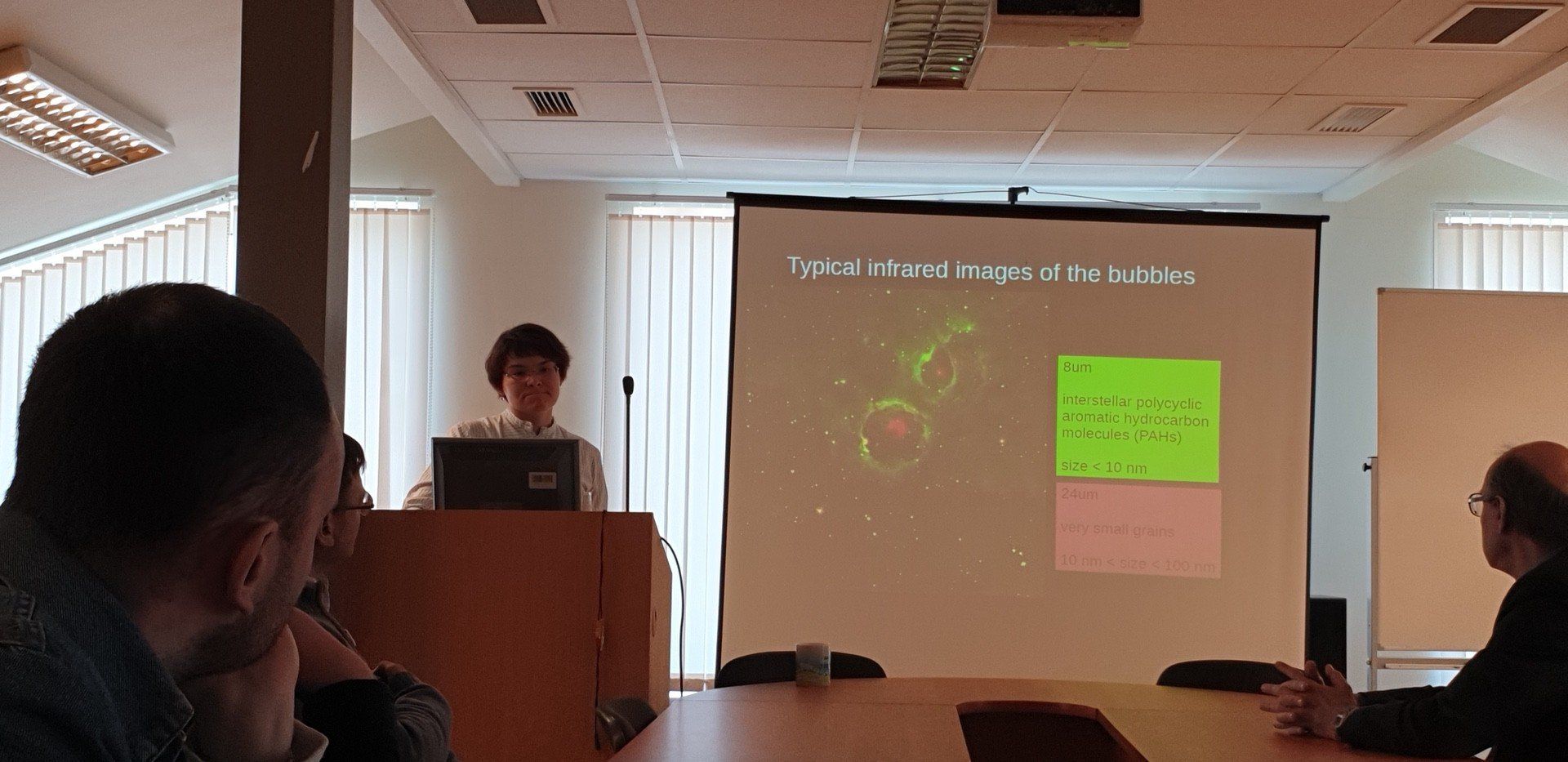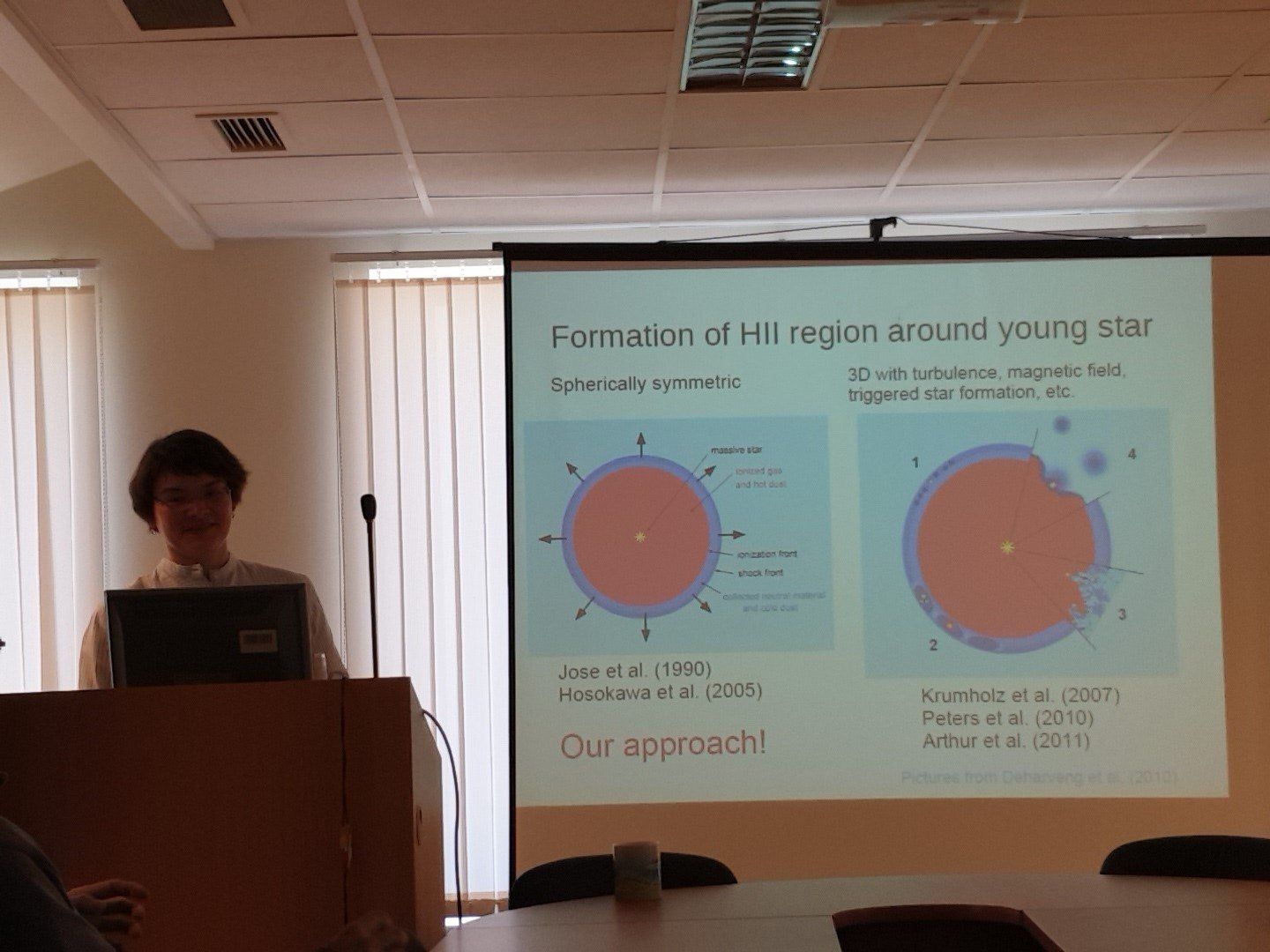This web page is created within BALTICS project funded from the European Union’s Horizon2020 Research and Innovation Programme under grant agreement No.692257.
VSRC notika Krievijas Zinātņu akadēmijas Astronomijas institūta vadošās pētnieces Marijas Kirsanovas lekcija
apr. 16, 2019
Šodien, 16. aprīlī, notika Krievijas Zinātņu akadēmijas Astronomijas instiūta vadošās pētnieces Marijas Kirsanovas lekcija “Gas and dust around expanding HII regions”.
SPEAKER: Dr. Maria S. Kirsanova, senior researcher, Institute of Astronomy, Russian Academy of Sciences
TITLE: Gas and dust around expanding HII regions
ABSTRACT: Massive stars signpost places of their birth in molecular clouds by expanding volumes of hot ionized gas. The region between hot ionized and cold molecular gas is known as photodissociation region (PDR). The physical and chemical properties of this region are defined by radiation spectrum from a massive star. The local radiation intensity inside PDR is able to dissociate molecules but not sufficient to ionize hydrogen. The HII and PDRs have very specific observational manifestation on Spitzer‘s images. Namely, the ring-like structures which are seen at 8 micron surrounds the inner regions which are bright at 24 micron. This is most probably related to the properties of dust particles which are not same inside and outside of HII regions. We started a theoretical study of expanding HII regions to clarify the reasons of this specific observational appearance and to understand how HII and PDRs look during their development around massive stars. Accurate treatment of dust dynamics let us explain some observational features of HII and PDRs and also suggest other processes needed to build complete sequence of dust evolution near massive stars. We arranged HII regions by their evolutionary status using radio continuum data and analyzed infrared flux at 8, 24 and 160 microns in them. Growth in the infrared fluxes towards the HII regions probably indicates a growth in the mass of heated material in the envelope surrounding these objects with increasing effective temperature of the star. We also found that neutral material around the HII regions have non-uniform spatial distribution and discuss geometry of one of the most famous HII regions RCW120 in details using observational data on molecular emission. Emission at 13CO(2–1) and C18O(2–1) lines in RCW120 is fitted by only a 2D model representing a ring-like face-on structure in agreement with our results about the infrared dust emission.
Pasākums notika angļu valodā.
E-pasts: virac@venta.lv
Tālrunis: +37163629656
Ekskursijas: +37129230818
Inženieru iela 101, Ventspils, LV-3601
Paldies par ziņu.
Mēs ar jums sazināsimies cik drīz vien iespējams.
Atvainojiet, ir notikusi kļūda.
Diemžēl ziņu nosūtīt neizdevās.
Lūdzu mēģiniet vēlreiz, vai sūtiet ziņu uz virac@venta.lv





















